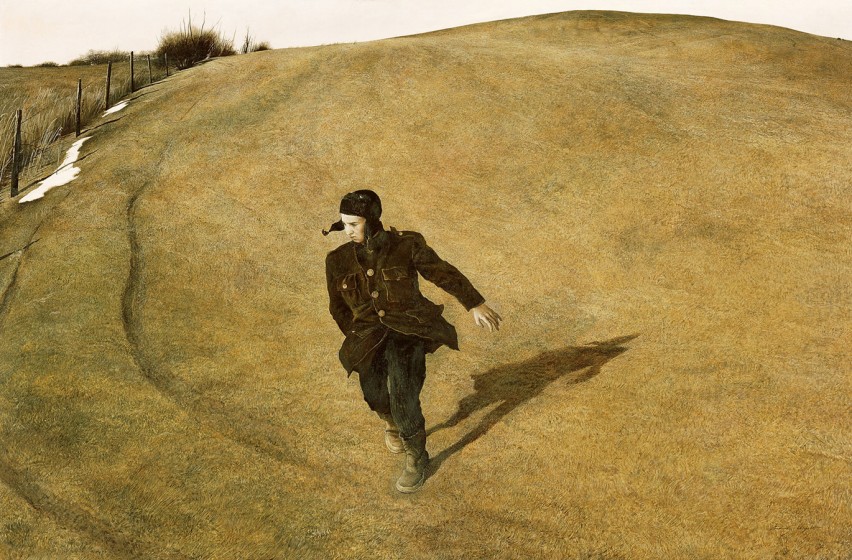 |
| Andrew Wyeth: Early Watercolors contains many good examples of Andrew Wyeth in PLAY mode |
 |
| Is this Andrew Wyeth at WORK? Winter, Egg Tempera, 1946. |
(The above image is presented as a link to an image on www.brandywine.org
and may not be visible if the author of that page makes changes.)
How much of your work is play, and how much of your play, work?
Confused? Although we moderns are used to the idea of segregating our work life from our play life, under the right circumstances, work and play may overlap—and even start to sound a lot alike.
We think of play as an activity that relaxes us and recharges our creative batteries. On the other hand, we think of work as something that drains them.
But sometimes play can be exhausting. If you're a backpacker, think of taking a 20-mile hike through new and exciting country, but one with rough terrain. At the end, you're beat but glad you made the journey. As a creative person, the mental equivalent of that 20-mile hike can “play you out.” But after resting, you'll recognize that you learned new things and boosted your creativity.
Like play, work can be relaxing. If you're a runner, think of your daily 6-mile run over familiar roads. The legs know the route and your lungs, the pace, and this sets your mind free. Your head clears. You return to life, ready to accept challenges. “Mindless work,” as it is called, will free you to direct your mental energy to that next project.
Andrew Wyeth is, to me, the best example of an artist for whom work and play overlapped. This is something about Wyeth that I haven't read in books, but it's my own take on seeing a great many of his paintings over the years. His egg tempera paintings—made in the studio with what appears to have been the tiniest of brushes and excruciating attention to the smallest blade of grass—constituted work. Some of his watercolors—painted in the field with seeming abandon and big brushes splashing lots of color—were play.
But did he perhaps find the egg tempera also relaxing, and the watercolor, exhausting?
As a painter myself, I'm sympathetic to these different modes of painting. Although working with tiny brushes and egg tempera is, to me, akin to the monotony of housepainting with a trim brush, I can see where the mind would be able to roam. Once I'd mixed that yellow-ochrey color and knew I had to apply it with a #1 sable round over a few hundred square inches of canvas, I'd start thinking about other things while my hand went at it. But with the plein air watercolors, there'd be complete engagement: observing, mixing, responding, splashing.
And yes, I'd be ready for a nap at the end.
